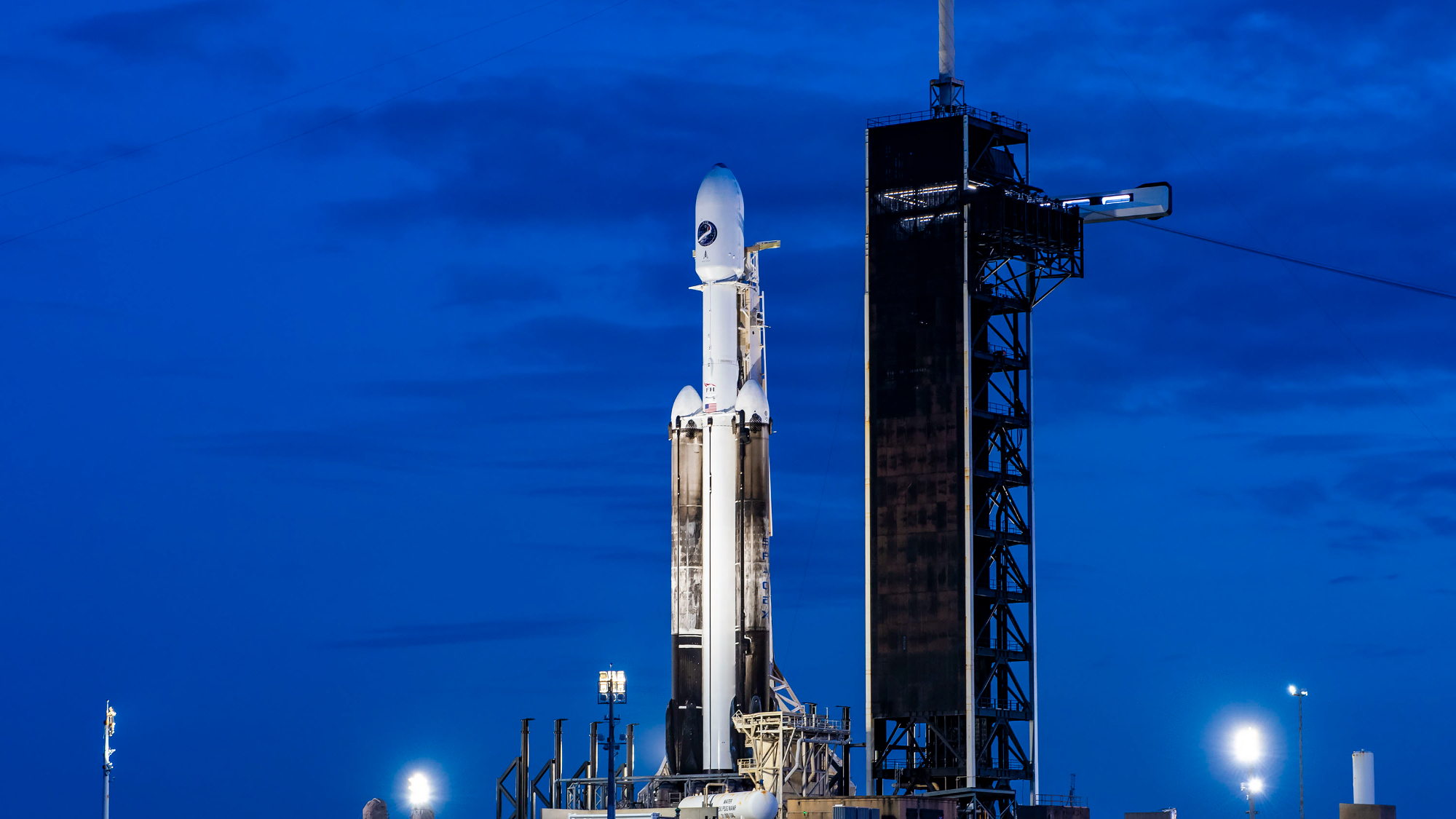
SpaceX's powerful Falcon Heavy rocket will fly again before the end of the year, if all goes according to plan.
SpaceX is now targeting Dec. 28 for the launch of the U.S. Space Force's X-37B space plane, which will fly atop a Falcon Heavy from NASA’s Kennedy Space Center in Florida.
You can watch the action here at Space.com, courtesy of SpaceX, when the time comes.
Related: The Space Force's secretive X-37B space plane: 10 surprising facts
SpaceX had originally planned to launch the robotic X-37B on Dec. 11. But about 30 minutes before the scheduled liftoff time that day, the company called things off, citing an issue with ground equipment. The resulting delay will now extend for 17 days, if the Heavy flies on Dec. 28 as currently planned.
The coming launch will be the seventh overall for the 29-foot-long (8.8 meters) X-37B, which military officials say is primarily an orbital testbed for new space tech.
It's unclear how long the X-37B mission will last; most details of the space plane's flights, including the identity and purpose of most of its payloads, are classified. But it's safe to assume the flight will be lengthy. Each X-37B mission to date has been longer than its predecessors, and the most recent one stayed aloft for 908 days before coming home in November 2022.
Get the Space.com Newsletter
Breaking space news, the latest updates on rocket launches, skywatching events and more!
The Falcon Heavy has launched eight times to date, including four times in 2023 already.
The Heavy — the second-most powerful rocket currently in operation, after NASA's Space Launch System — last flew this past October, when it launched NASA's Psyche probe toward the asteroid belt.
Join our Space Forums to keep talking space on the latest missions, night sky and more! And if you have a news tip, correction or comment, let us know at: community@space.com.

Michael Wall is a Senior Space Writer with Space.com and joined the team in 2010. He primarily covers exoplanets, spaceflight and military space, but has been known to dabble in the space art beat. His book about the search for alien life, "Out There," was published on Nov. 13, 2018. Before becoming a science writer, Michael worked as a herpetologist and wildlife biologist. He has a Ph.D. in evolutionary biology from the University of Sydney, Australia, a bachelor's degree from the University of Arizona, and a graduate certificate in science writing from the University of California, Santa Cruz. To find out what his latest project is, you can follow Michael on Twitter.









